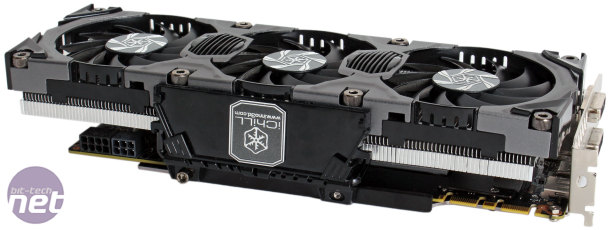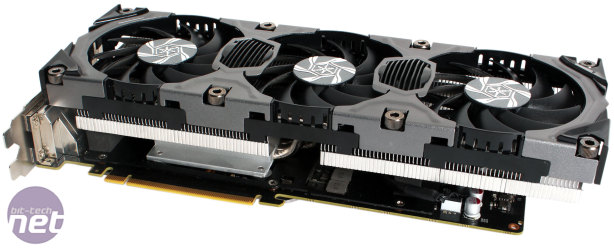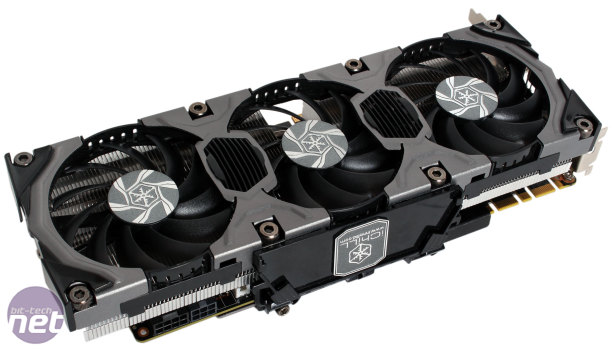
Performance Analysis
This card's performance is simple to summarise – it's faster than any other single GPU card we've seen, which shouldn't really come as a surprise, as pretty much any overclock on a GTX 780 Ti will be enough for it to exceed the performance of GTX Titan Black. Nevertheless, it trumps Nvidia's finest by a fair bit thanks to the core running almost 25 percent faster than stock speeds.In Battlefield 4, the Inno3D card was 9 and 15 percent quicker than GTX Titan Black and a whole 20 percent faster than the R9 290X, except at 4K – at this resolution the two cards have the same minimum frame rate, but Inno3D's average is over 20 percent faster again.
The story is similar in BioShock Infinite and Cysis 3, though in the former game the Inno3D card has a massive advantage over the R9 290X – a 61 percent difference in minimum frame rates when using three screens, for example. The Inno3D still isn't enough to be playable at 4K in Crysis 3, even without anti-aliasing – if that's your aim, multi-GPU is your only option.
Naturally, the card has no trouble blitzing through our aging Skyrim benchmark, maintains at least 60fps for the entire benchmark at both 5,760 x 1,080 and 4K with every detail at full – you can't ask for much more than that.
We've included 1080p Unigine results so you most people should be able to compare their set-ups to this card, and once again the Inno3D dominates – even the R9 295X2 is only 9 percent ahead here. Meanwhile, in our usual 2,560 x 1,440 benchmark it's 12 percent ahead of Titan Black and over 40 percent quicker than the R9 290X. That said, the 295X2 is now ahead by much more than before thanks to this resolution being less CPU-limited.
Power consumption registers as 28W more than stock, which is more than acceptable given the hefty overclock. It's also still lower than the R9 290X (albeit only by 1W), despite the very sizeable performance difference between them.
The delta T in our thermal test of 45°C is nice and chilly, although we have to say we were hoping it would be even cooler, as the dual slot Zotac card was only 2°C warmer. That said, Zotac's effort runs a little louder too – the Inno3D card was very difficult to hear, even under load. At least, that's true of airflow noise, as unfortunately we noticed an irritating coil whine coming from the card when it was under load. This is unlikely to be the fault of Inno3D given that it's using the reference PCB and power hardware, but it's still something that shouldn't have passed quality control. We should point out, however, that it's not a brand new sample, so we can't be sure that it was there from the start. Either way, it does make us wish again that Inno3D had upgraded the power components on this £600 GPU.
Overclocking brought about the expected performance increases in our benchmarks, furthering the Inno3D's lead on the other single GPUs, though naturally still leaving it tailing the R9 295X2 by some distance. Pleasingly, the temperature only increased by 2°C and the fan speed by just 3 percent, making it slightly more audible but not massively. Meanwhile, power consumption peaked at 419W, 11W higher than before.

MSI MPG Velox 100R Chassis Review
October 14 2021 | 15:04











Want to comment? Please log in.